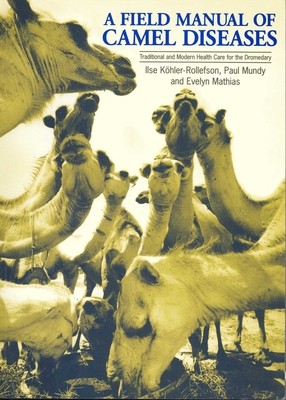
- We will send in 10–14 business days.
- Author: Ilse Köhler-Rollefson
- Publisher: ITDG Publishing
- Year: 2001
- Pages: 254
- ISBN-10: 185339503X
- ISBN-13: 9781853395031
- Format: 18.8 x 24.4 x 1.5 cm, minkšti viršeliai
- Language: English
- SAVE -10% with code: EXTRA
Reviews
Description
The one-humped camel, or dromedary, is one of the world's hardiest domesticated animals. A vital source of transport, meat, milk and income for pastoralists in the Sahel, East Africa, the Middle East and South Asia, the camel can carry heavy loads for days in some of the world's most hostile conditions. But even camels fall ill. A Field Manual of Camel Diseases is the first practical guide to camel diseases designed for use in low technology environments. The manual details some 80 major camel diseases and conditions, ranging from abortions to wry neck syndrome. For each disease, the authors give the disease signs, its causes, and simple prevention and treatment methods. Both scientific and tried and tested traditional treatments are presented, thus enabling the veterinarian or livestock practitioner to make the most appropriate choice in the prevailing circumstances. Local and scientific names of diseases and plants are given, enabling enhanced communication and understanding between pastoralist and veterinarian. A list of common medicines and their dosages acts as an aide-memoire. Illustrated throughout by artists familiar with camels to show clearly the diseases and how to treat them.
EXTRA 10 % discount with code: EXTRA
The promotion ends in 21d.23:22:10
The discount code is valid when purchasing from 10 €. Discounts do not stack.
- Author: Ilse Köhler-Rollefson
- Publisher: ITDG Publishing
- Year: 2001
- Pages: 254
- ISBN-10: 185339503X
- ISBN-13: 9781853395031
- Format: 18.8 x 24.4 x 1.5 cm, minkšti viršeliai
- Language: English English
The one-humped camel, or dromedary, is one of the world's hardiest domesticated animals. A vital source of transport, meat, milk and income for pastoralists in the Sahel, East Africa, the Middle East and South Asia, the camel can carry heavy loads for days in some of the world's most hostile conditions. But even camels fall ill. A Field Manual of Camel Diseases is the first practical guide to camel diseases designed for use in low technology environments. The manual details some 80 major camel diseases and conditions, ranging from abortions to wry neck syndrome. For each disease, the authors give the disease signs, its causes, and simple prevention and treatment methods. Both scientific and tried and tested traditional treatments are presented, thus enabling the veterinarian or livestock practitioner to make the most appropriate choice in the prevailing circumstances. Local and scientific names of diseases and plants are given, enabling enhanced communication and understanding between pastoralist and veterinarian. A list of common medicines and their dosages acts as an aide-memoire. Illustrated throughout by artists familiar with camels to show clearly the diseases and how to treat them.


Reviews